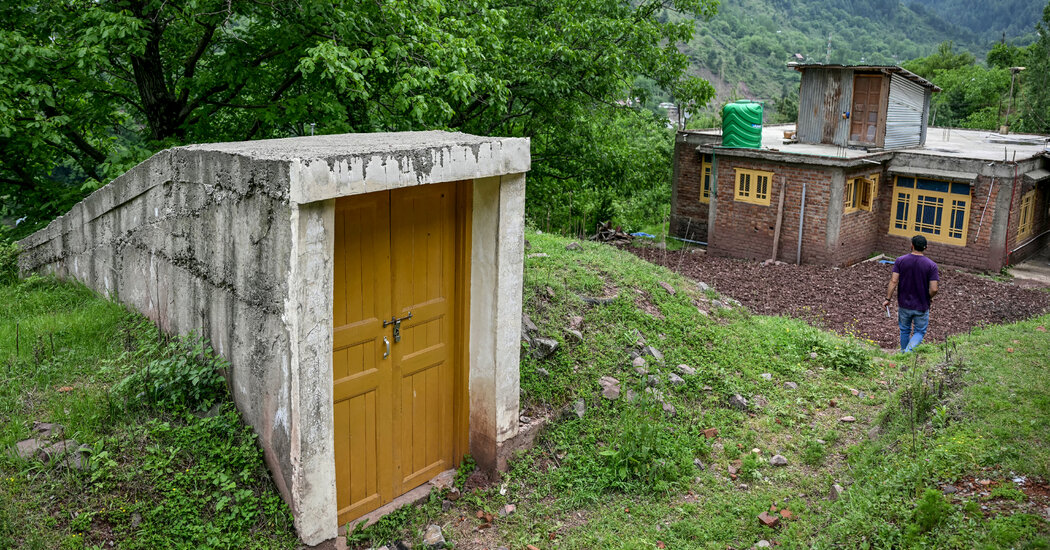India’s government has initiated civil defense drills nationwide in preparation for possible military conflict with Pakistan, following a recent terror attack in Kashmir that killed 26 people. India accuses Pakistan of responsibility, leading to heightened tensions and military threats. The Indian Home Ministry mandated drills in 244 districts, focusing on air raid protocols and public readiness. Amid cross-border skirmishes, India has also paused participation in a crucial water treaty, raising concerns in Pakistan regarding agricultural impacts. The escalating situation has prompted international calls for restraint, highlighting the risk of a military confrontation between the two nuclear-armed nations.
The government of India has instructed officials to conduct civil defense drills across much of the nation on Wednesday in anticipation of a possible military conflict with Pakistan, its long-standing rival.
Tensions have sharply increased between the two nuclear-armed nations, which have engaged in multiple wars, following a recent terrorist attack that resulted in the deaths of 26 individuals in the India-administered region of Kashmir, a historically contested area. India accuses Pakistan of involvement in the attack, a claim that Pakistan denies.
India is advocating for military strikes against what it identifies as terrorist havens in Pakistan and has suggested a series of retaliatory actions. Pakistan has vowed to respond correspondingly to any military initiatives from India.
Recently, small-arms fire has erupted along the border, and increased activity in New Delhi indicates a possible imminent strike by India. Prime Minister Narendra Modi has held multiple meetings with military leaders, and officials have publicly discussed potential actions against Pakistan.
Antonio Guterres, the UN Secretary-General, remarked that tensions between India and Pakistan “are at their highest in years.”
“Targeting civilians is unacceptable, and those responsible must be brought to justice through credible and lawful means,” Mr. Guterres stated on Monday. “It is essential, especially at this critical moment, to avoid a military confrontation that could easily escalate.”
In a letter dispatched on Monday to all states and territories, India’s home ministry mandated drills to evaluate public readiness for conflict. In 244 districts—designated as civil defense areas due to proximity to the border, coastal locations, or other vulnerabilities—drills will be required in all villages, according to the letter.
The letter, which was reviewed by The New York Times, noted that the drills should involve testing air raid sirens and educating civilians on managing blackouts and executing evacuations.
Similar drills have recently been conducted near the border, especially in Kashmir, where videos have shown schoolchildren participating in duck-and-cover exercises and residents preparing bunkers for potential airstrikes.
Nirmal Kumar Singh, 87, a former senior police officer, recalled that such drills occurred during the India-China war in the 1960s and before the 1971 war between India and Pakistan.
“However, I do not recall such drills being conducted after the 1971 India-Pakistan war,” Mr. Singh noted.
Most of India’s retaliatory measures in the two weeks following the attack have been non-military and have initiated counteractions from Pakistan.
Both countries have expelled each other’s citizens from their territories. Bilateral trade has been halted, and airspace has been closed to each other’s airlines.
One significant step has been India halting its participation in a water treaty that regulates the flow of key rivers crucial for Pakistan’s irrigation system.
Experts and officials indicate that significantly diverting water flow to Pakistan is a formidable and long-term endeavor that will necessitate India investing in new dams and infrastructure for water storage.
Nevertheless, India possesses means to restrict vital data-sharing or temporarily disrupt river flows, complicating Pakistan’s planning.
“What is at stake is not merely the actual volume of water, but the predictability and timing of its flow,” explained Hassaan F. Khan, an assistant professor of environmental studies at Tufts University. “In the past, Pakistan’s water managers could reliably arrange their plans according to these flows. Now, with sudden and unannounced disruptions, that predictability is diminishing. This presents serious operational challenges for a water-stressed country like Pakistan.”
Recently, reports have indicated that India is leveraging some of these strategies, with observations of reduced water flow in the Chenab River. Two Indian officials familiar with the Chenab situation stated that India was utilizing more freedom to remove silt and sediment from dams, subsequently slowing the downstream water flow to replenish the dams.
Amid rising tensions, any such disruptions would be perceived as punitive measures.
One official mentioned that such disruptions may last a few days until the dams refill. The local administration used police vehicle loudspeakers on Monday to warn individuals in the riverbed area to evacuate to safety, as water levels were set to rise soon.
Pakistan’s water management authority has voiced concerns that disruptions could affect the upcoming May-June harvest, a crucial period for agricultural activities, especially in Sindh and Punjab Provinces, where cotton planting is ongoing and rice cultivation is about to start.
Khwaja Asif, Pakistan’s defense minister, has issued a warning that any construction by India aimed at diverting water in breach of the treaty would be regarded as an act of aggression.
“Such an act would amount to a declaration of war against Pakistan,” Mr. Asif remarked during a TV interview on Saturday. “These actions could lead to nations facing hunger or thirst.”
Showkat Nanda, Zia ur-Rehman, and Farnaz Fassihi contributed reporting.
